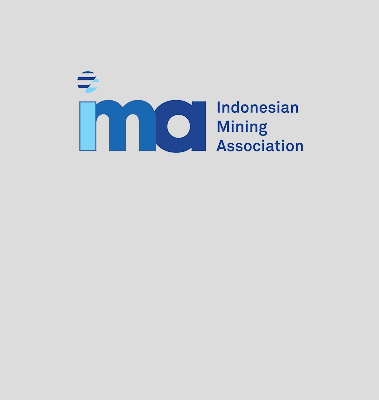Mining giant BHP has threatened to mothball some of its Queensland coal mines as it confronts an extended slump in coal prices and what it calls an “extreme” royalty regime.
The ASX-listed $200bn behemoth revealed the risk in its financial results for 2025, warning if low coal prices persisted, “options to pause lower margin areas of our operational footprint will be considered”.
BHP operates the Caval Ridge, Goonyella Riverside, Broadmeadow, Peak Downs and Saraji metallurgical coal mines in central Queensland’s Bowen Basin in conjunction with Mitsubishi.
The mines collectively employ thousands of workers and contractors and serve as a core economic engine for the region and the state.
BHP has railed against Queensland’s new royalty regime, introduced in 2022 by former Labor treasurer Cameron Dick, which sharply lifted tax rates on coal, adding three new tiers to the existing tiered structure.
Companies now pay 20 per cent on the dollar when coal prices exceed $175 per tonne, 30 per cent on the dollar when prices climb beyond $225 per tonne and 40 per cent when they exceed $300.
Queensland has the highest maximum coal royalty rate in the world.
Indonesia comes in at second place with a maximum rate of 28 per cent and among developed nations, Canada follows Australia with a rate of 15 per cent.
On a media call on Tuesday morning, BHP CEO Mike Henry said the shock threat was a “statement of where the business is at with relatively low coal prices”.
“What has happened that due to changes that were made to the royalty regime a few years, the benefit of any upswing in coal prices has been seriously eroded from a BMA perspective,” he said.
“So in the face of tougher times like we see currently, there is less ability or willingness on the part of the business to see through those tough times and perhaps carry some negative cash flows, we have to act even more expediently to shut any loss making production, because we don’t get the benefit on the other side of the equation when prices rise.”
Mr Henry said the company’s Queensland division now confronted an effective tax rate of more than 60 per cent.
On a separate question from the AFR’s Peter Ker, Mr Henry confirmed a headcount reduction was possible in Queensland if low prices continued.
“We’ve noted in the results some of the pressures that we’re under in Queensland, in the face of both low coal prices and recent changes to the royalty regime, so depending on how coal prices play out there, that could see us needing to move to take some steps there,” he said.
Queensland’s Coal Royalty Structure (From July 1, 2022)
| Price per tonne ($AUD) | Royalty Rate |
| Up to $100 | 7% |
| More than $100 and up to $150 | 12.5% |
| More than $150 and up to $175 | 15% |
| More than $175 and up to $225 | 20% |
| More than $225 and up to $300 | 30% |
| More than $300 | 40% |
In a statement, Queensland Resources Minister Dale Last said the newly elected LNP government would keep the royalty rates in place.
“Royalty rates are not under consideration,” he said.
“Unlike Labor, the Crisafulli Government is backing Queensland’s hard-working mining families and is supporting the mining industry with streamlined approvals to reduce unnecessary costs and create more jobs.”
The company reported a sharp slump in profits and revenues for the 2025 financial year on Tuesday morning, crediting a decline in iron ore and coal prices for the tumble.
The company reported underlying profits of $US10.2bn ($A15.7bn), a 26 per cent fall on the prior year.
Revenues came in at $US51.3bn ($A79bn), an 8 per cent fall on 2024.
Underlying earnings before interest, tax, depreciation and amortisation, meanwhile, tumbled 10 per cent to $US26bn ($A40bn).
The “underlying” measure strips out one-off costs and gains and is designed to present a clearer picture of a company’s performance.
Statutory profit, which includes one-off items, lifted 14 per cent from 2024 to $US9bn ($A13.8bn).
The company mines predominantly iron ore, coal and copper across Australia and Chile.
Coal and iron ore are core inputs to steelmaking and prices are heavily dependent on Chinese demand for steel.
BHP’s average realised price for its Pilbara iron ore, or how much the company received for each tonne of material, was $US82.13 across the year compared with $US101.04 for 2024.
Iron ore accounts for the majority of the miner’s earnings.
The Queensland coal segment reported a 69 per cent slump in underlying earnings to US$600m.
Despite falls in revenue, earnings and underlying profits, chief executive Mike Henry called the results “a strong performance”.
“FY25 was another strong year for BHP, marked by record production, continued sector-leading margins and disciplined capital allocation,” he said.
“Safety remains our highest priority and we achieved year-on-year improvements across key metrics.
“Against a backdrop of global uncertainty this strong performance has led to robust financial outcomes and reflects the resilience of BHP’s business and strategy.”
The results were broadly in line with market expectations.
Shareholders would receive a final dividend of 60c a share, the company said.
It also outlined its growth spending plans.
Mr Henry said BHP would invest $17bn on capital and exploration in each of the next two years, before reducing the spend to about $15.4bn for each year between FY28 and FY30.
The spending includes building out the company’s new potash mine in Saskatchewan, Canada, ramping up copper production in Chile and South Australia and reaching sustained iron ore production in WA of more than 305Mt a year.
In 2025, BHP produced 290Mt in the Pilbara.
While iron ore and coal prices slipped, copper prices lifted and provided a boost to the company’s earnings.
Underlying earnings across the copper division jumped 44 per cent to hit $19bn.
In South Australia, the company is pushing to lift production from its current rate 316,000kt a year to more than 500,000kt.
In its economic outlook statement, the company said it expected “policy support” to act as a “key stabiliser” for China’s economy.
“We expect the outlook to remain constructive as China continues to rebalance its economy and strengthen domestic demand,” the outlook read.
Mr Henry warned the global economic outlook was “mixed”.
“Growth is expected to ease to 3 per cent or slightly below in the near-term amid shifting trade policies, yet demand for commodities remains strong, particularly in China and India,” he said.
“Chinese copper demand outperformed in FY25, while iron ore demand was resilient, driven by strong infrastructure investment and manufacturing activity in China.
“Steelmaking coal prices have softened due to oversupply, though policy shifts in China and new blast furnace capacity in Asia are expected to support the market.”
Shares in the company lifted nearly 1 per cent in morning trade to $41.88.


